
With fun, hands-on experiments, detailed instructional material and a variety of cool high-tech features, Mel Science offers science kits for kids that balance interactivity and education in a way that few others can.
Although not the cheapest subscription STEM kit, and while parental supervision is often required, those looking for a monthly science kit that can spark their child’s imagination and interest in science should definitely check out what Mel Science has to offer.
What We Like
But watch out for…
What is Mel Science
Founded in 2014 by a team of science enthusiasts and PhD holders, Mel Science is a subscription service that offers a variety of hands-on science kits and associated learning materials for kids.
Designed to supplement both homeschool and traditional school learning, Mel Science offers a curated selection of project-based STEM kits for younger kids, as well as full monthly experiment kits in chemistry , physics and medical science for older students.
Recently, Mel Science has begun offering several high tech learning solutions for its members, including augmented reality lessons and even full virtual reality labs for more engaging science explorations.
What grades do Mel Science Kits cover?
Mel Science has a fair variety of science kits that are aimed at students in the K-12 grade range, or about 5-16+.
Generally speaking, their kids’ STEM kits are designed for kids up to late elementary-early middle school, while their more focused, subject kits (chemistry, physics, medicine) are aimed at students in middle-high school.
The company’s recommended age range for each product line is:
| Mel Science Kids | Ages 5-9+ |
| Mel Chemistry | Ages 10-16+ |
| Mel Physics | Ages 8-14+ |
| Mel Med | Ages 14+ |
| Mel VR Science Simulations | Ages 8+ |
It is somewhat important for parents to keep an eye on the recommended age ranges when buying these kits as a gift, as they can be fairly hands-on, at times involving chemicals, motors, VR equipment, glass, magnets, and even scalpels.
These are not toy science kits, but are very lively and highly interactive labs and lab projects that will have things ignite, dissolve, get cut open, move, shake, fly off and more.
Similarly, Mel Science’s learning material can get fairly in-depth and tends not to shy away from using professional, sometimes complex subject-level vocabulary that can go over the head of younger students if they are using the kit on their own.
That said, these kits are designed for home learning, either as part of a homeschool program or a supplement to traditional learning, and many of the projects and we feel the experiments can be done by younger students as long as parents are willing to provide appropriate supervision.
Even if younger students don’t appreciate all the nuances of STEM learning, the experiments are usually exciting and amusing enough to keep them paying attention and can help spark an interest in the sciences.
How it works
At its heart, Mel Science is a subscription service.
Families sign up for the program they would like and, each month, receive a kit containing a couple projects or experiments to try out at home.
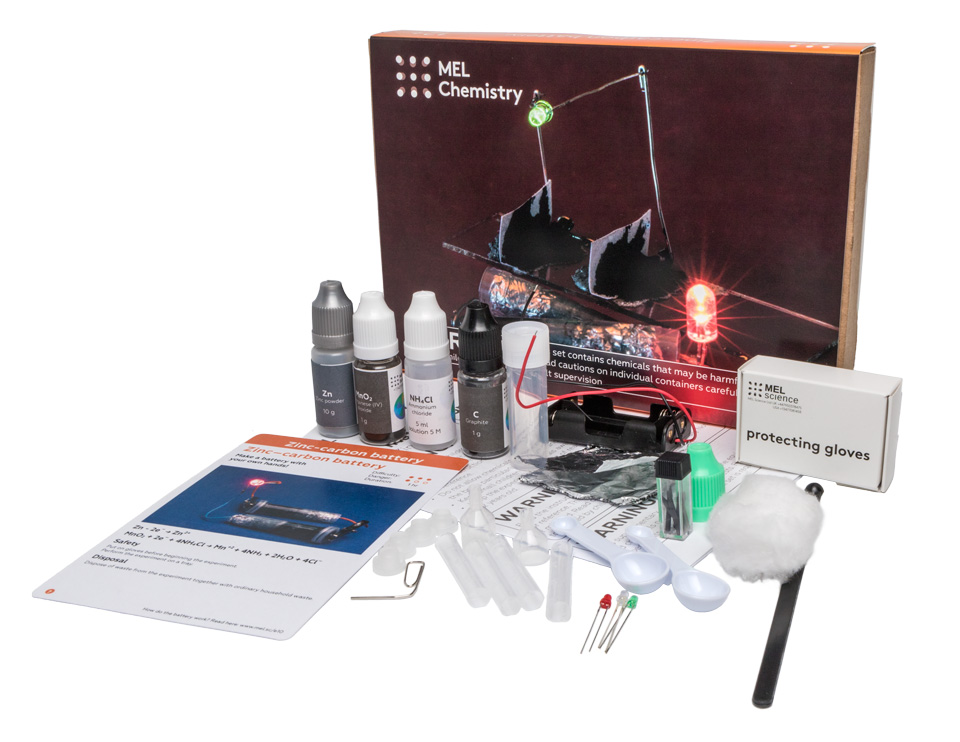
Beyond the experiments and projects, Mel Science also includes instructions, access to the Mel Science app and its virtual/mixed-reality features.
Most importantly, however, Mel Science includes fairly in-depth, age-appropriate science lessons on relevant science topics.
Mel Science App
Each of the kits offered by Mel Science are designed to interact with one of three downloadable Mel Science apps currently available:
- Mel Science – For Mel Chemistry and Mel Physics
- Mel Kids – For the Mel Kids STEM kits
- Mel VR – which contains Mel Science’s virtual reality lab and lessons
These apps essentially centralize a lot of the instructional and educational features that Mel kits have, making everything a little more convenient and organized so parents don’t have to worry about keeping various manuals and instructions from getting lost.
Beyond keeping everything centralized and digitizing the science kit experience, the apps tend to also contain a variety of interesting and useful features.
For the subject kits (Mel Chemistry and Mel Physics), the app provides detailed, step-by-step visual instructions on how to set each experiment up correctly, with simplified diagrams and clear, simple language that leave little room for confusion or user error.
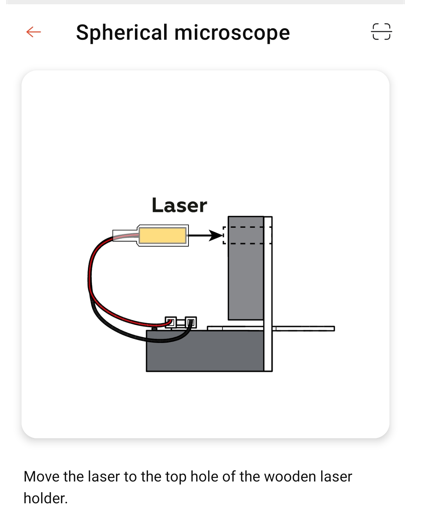
There are also integrated video demonstrations of the various experiments in action, as well as a difficulty and danger level for each project, which can be helpful in giving parents a better idea of project outcomes and how involved things are possibly going to get.
The apps also provide a scientific description for each experiment, which is a fairly detailed lesson on the science behind each experiment that touches on essential concepts for the topic at hand, as well as some interesting diagrams and drawings that can give both parents and students a good idea of what’s going on.
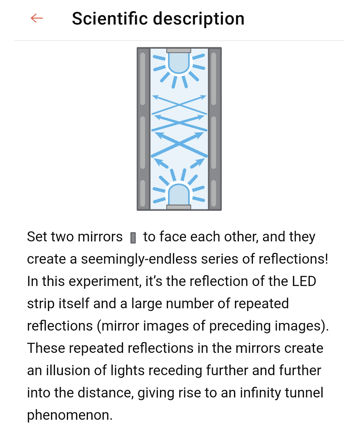
Interestingly, Mel Science app even allows kids to take, keep and even send out photos of their experiments when they are done, for some social recognition of their work.
There is also a progress tracking feature to allow kids and parents to keep track of their projects and their learning over time.
When it comes to the Mel Kids subscription, parents download the specific Mel Kids app, which provides students with a far more interactive and cartoon-like experience and lesson structure.
Unlike the standard Mel Science app, the kids version doesn’t contain separate sections for explanations, demonstrations and explorations, but rather integrates it all into one animated lesson, which makes sense given the younger intended age range and their somewhat more limited attention spans.
On the downside, with no unified app for the various different products, it does mean that parents may have to download and keep several different apps.
For example, those using the Physics and Chemistry kits to the fullest will require the Mel Science App itself as well as a separate VR app to access the virtual reality lessons.
Similarly, those purchasing the Mel Kids STEM kits and who want to keep a photo record of their projects or otherwise keep track of their progress will also have to download the main Mel Science app.
That said, having separate apps for the different products does mean that the apps themselves are less bloated, meaning they are a bit more streamlined and quicker to use, particularly when it comes to the resource intensive VR lessons.
Mel VR Science Lessons
One thing that is quite interesting with Mel Science is that subscriptions to both Chemistry and Physics kits include a free pair of VR goggles that students can use to access virtual reality lessons in science.
After downloading the relevant Mel Science VR app, students can put on the included VR goggles (they can explore the labs on their device’s screen with a 3D mode as well) and enter an immersive virtual laboratory where they can turn their head around and explore a three dimensional, 360 degree virtual classroom and science lab.
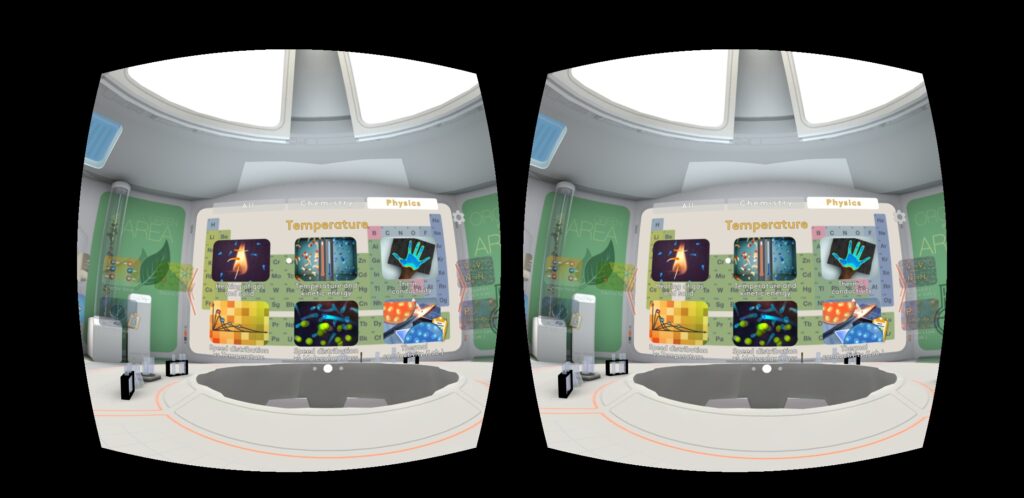
The program offers a variety of fairly in-depth lessons in both Chemistry and Physics that allow students to virtually shrink themselves down to the molecular level, allowing them to virtually explore and interact with 3d representations of atomic structures, bonds, gasses and more as if they were really there.
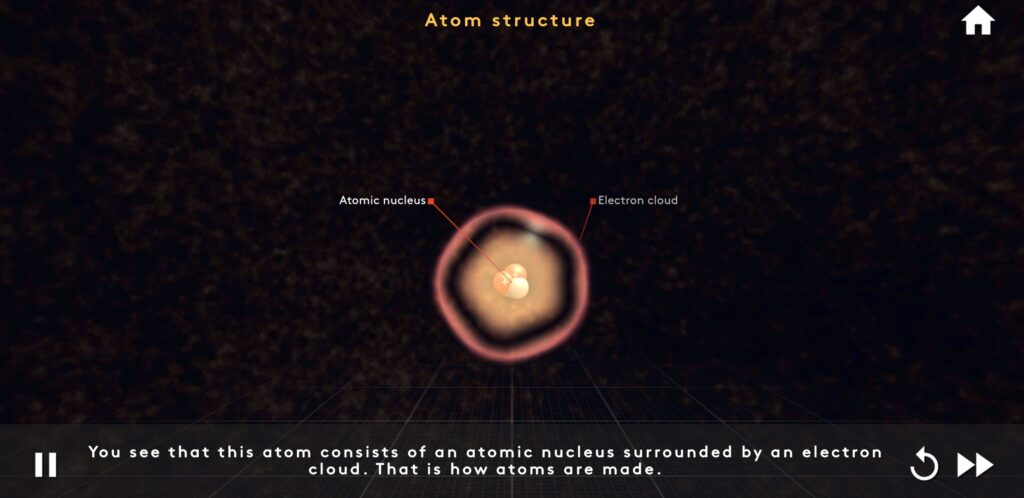
There are also a variety of almost game-like lab exercises that let students adjust, tweak and control their environment, as well as answer questions and perform educational challenges, giving students a more experimental, hands-on learning experience in addition to audiovisual explanations of ideas.
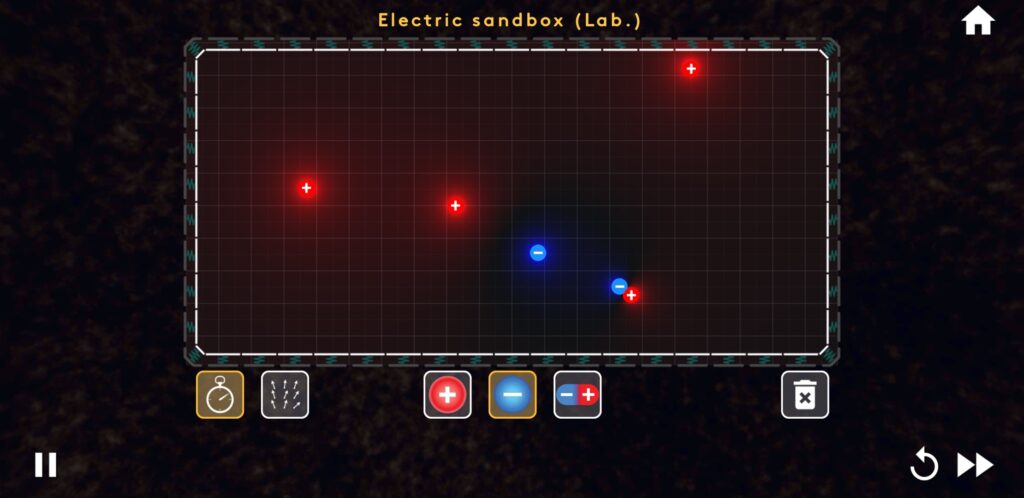
Mel’s VR app is actually pretty cool and, unlike some other educational VR products, isn’t just a novelty.
In terms of learning the VR lessons are actually quite high quality.
Students are given fairly comprehensive and in-depth audio and visual explanations on relevant topics that bring the subject matter to (virtual) life.
The explanations and investigations are thorough and of a quality one might expect from a decent science textbook, although far more richly animated, interactive and engaging especially when using the goggles.
In fact the learning and scientific rigor can sometimes reach a level of sophistication beyond its intended age range, flying over the heads of younger students (figuratively and literally), although it can spark interesting discussions with parents and act as a jumping off point for further explorations.
Importantly, Mel Science’s VR lessons explore science concepts in a way that really help kids get a firm understanding of the material.
Students can often have a hard time grasping some of the more abstract concepts in science (gases, molecules and bonds, for example) and actually seeing them move around in front of them and being able to interact with and explore them can really help kids better understand the material.
On the downside, while the lab is fully rendered in 3D, with doors, windows and various lab equipment, only some of the environment is currently interactive. The inability to click on and interact with some of the background objects may disappoint some students in the long run.
Mel Science Kits
Mel Kids
Mel Kids is Mel Science’s range of STEM kits aimed at younger students, namely those ages 5-9, and are designed to introduce them to the essential principles of science in a fun, hands-on and easy to understand way.
Unlike the kits aimed at older kids, each Mel Kids kit contains one main project (rather than 2 or 3) that is designed to carry learning through for a month.
For the most party, these projects are centered around topics in chemistry or physics, sometimes even blending the two, rather than specializing in one or the other as with other Mel Science subscriptions.
And this makes sense as science at the elementary and lower grade levels are more general in nature and tend to cover and explore a variety of disciplines in science, rather than exploring any one in great depth.
Some examples of projects and experiments found in Mel Kids can be found below:
| Kit | Project | STEM Topics |
| Music box | Build and use a music box | Sound Sound waves Pitch Vibrations And more |
| Spring Force | Build and race a rubber band racer | Friction Traction Power Watts/Horsepower And more |
| Space Rocket | Build a compressed air powered rocket | Rockets Propulsion Reactive motion Compression And more |
As can be seen, in addition to having fairly interesting and hands-on STEM projects, Mel Kids doesn’t skimp on the learning.
As they read about and complete their projects, they’ll be exposed to some fairly interesting and sometimes sophisticated concepts in science.
Sometimes these concepts can be a bit beyond what a child of 5 or 6 might be normally exposed to in a science curriculum, which can make Mel Kids a good enrichment option for younger kids, albeit one that might require a little parental explanation and help here and there.
In terms of the projects themselves, they are usually quite interesting and often amusing for kids, ultimately producing objects that move, sail, launch or otherwise do things that will grab a child’s attention quickly and pretty effectively.
Although there is very little that is wildly unusual or cutting edge with these projects, they are child safe and can be a lot of fun for kids to mess around with even once the learning is long over.
In terms of quality, their component parts are usually made out of wood, which is a step up from the cardboard that most other kids’ STEM kits use.
Although not the most fascinating or durable material out there, we feel the wood does stand up nicely to most of the rough handling that kids will put it through during construction, preventing the kinds of accidental breaks and snaps that would otherwise cause lessons to end in tears, rather than learning.
It also means that, once completed, kids can freely paint and decorate their projects, which is kind of fun.
Each kit also has some fairly useful features that are also designed to be appealing and entertaining for kids.
Rather than relying on the Mel Science app to keep track of their progress, kids are given a cartoon map (the Mystery Planet Map) in their first box and with each kit they receive a sticker that they can attach to it, creating a record of their learning.
Similarly, like the other kits in the Mel Science line, Mel Kids contains a fair amount of learning. In keeping with the age group for which these kits are intended, these instructions and science explorations are in comic book form.
Kids are taken through each project and topic via a little story involving a cast of cute dinosaurs.
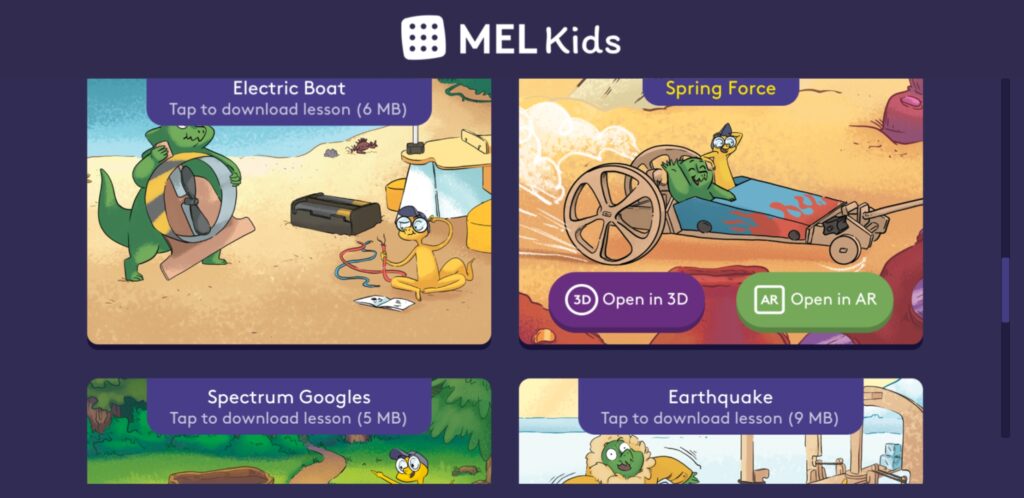
Each story tends to begin with a little background information, offers some explanations of scientific concepts, and generally sets up the science concept or problem that the kit will help solve.
Kids are then given very visual, dialogue-free instructions to help assemble their experiment, and then concludes with a little more story and a general wrap up.
Much like a real child’s comic, at the back are a variety of bonus educational activities related to the topic at hand in some way, such as games, cut outs, counting activities and more.
Each kit also contains a few special cards, which are actually augmented reality markers. Kids can open the app and scan them using their device’s camera, and a 3D representation of the kids project will appear over the marker.
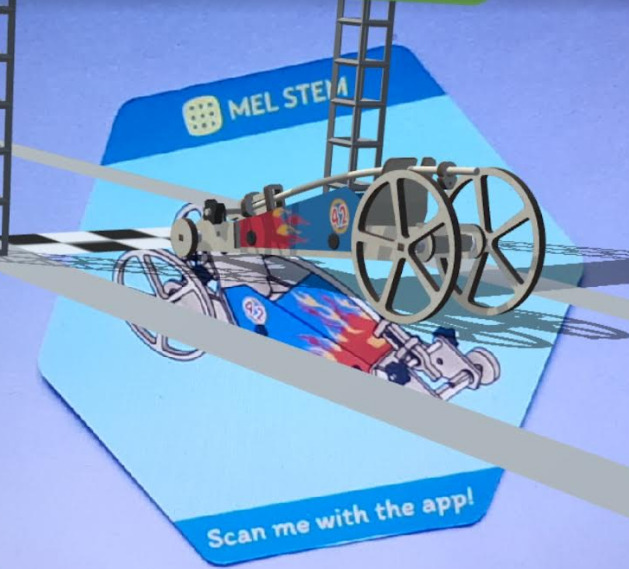
This representation actually moves and its functions are fully animated, giving kids a tiny version of their project that can demonstrate not only what it looks like, but how it is supposed to work.
Coming to life right on their carpet or kitchen table, not only is this a very cool, novel and engaging experience for kids, but it actually integrates with some pretty detailed animated science lessons.
Taking control of the augmented reality model, the Mel Kids app offers a more comprehensive explanation of how each project works and the scientific principles behind them.

It is also fully interactive, programmed to allow kids to zoom in or zoom out, change angles to get a better look at things and even occasionally allows them to interact with the digital model, letting them explore different variables without worrying about breaking anything.
The lessons and explanations in the augmented reality app are also dinosaur-themed and dive into science a little more than the comic books and do a good job at explaining relatively complex science topics to kids in a way they can understand.
That said, we did feel that these science lessons were a little short, and while they did cover the material in a way that isn’t too demanding of a child’s attention span (letting them get on with the project), we would have preferred a little more detail in some areas.
Ultimately, Mel Kids offers a lot of fun in each of their kits, as well as being solidly educational.
The addition of comic book instructions and augmented reality are features that we feel really add value to the kits, providing kids with a very novel and entertaining experience that can really help them connect to science.
Mel Physics
When parents subscribe to Mel Physics, they will be sent a variety of complete physics experiments and projects each month that kids can do at home.
As with other Mel Science kits, these boxes come more or less complete although from time to time parents may have to supply small items, like batteries.
On the whole, however, the kits provide just about everything needed for each project, including some more hard to find components, such as mirrors, wires, LEDs, motors, buttons, switches and more, meaning the kits are essentially open and go.
Mel Science offers a wide variety of physics kits. Each kit has a particular theme and includes 2-3 experiments per kit that explore different topics in physics.
A sample of these kits and their educational value in physics can be seen below:
| Kit | Experiments | Physics Topics |
| Alternative Energy | Wind Energy Solar Energy Heat Energy Energy Transformations | Energy Energy transfer Photoelectricity Circuits Thermoelectricity Generators And more |
| Electric Motor | Electric motor Electromagnet Electric Generator | Magnetism Lorentz force Magnetic fields Electricity Electromagnets Electron flow And more |
| Lenses | Flat Beam Laser Spherical microscope Bottle Lens The Lens of Invisibility | Light Reflection and refraction Lasers Lenticular lenses Transparency And more |
| Hydrophobicity | Droplet labyrinth Oil Spill Hydrophobic Sand Wettability | Hydrophobia Hydrophilia Forces of attraction/repulsion Density And more |
As can be seen by the topic coverage above, these kits aren’t just casual, rainy day science fun.
The included lessons and explanations can reach a fair degree of sophistication in terms of physics learning, touching on a variety of middle and high school physics topics, yet explaining them in a fairly simple and easy to understand way (especially given the project’s hands-on demonstration of the concepts).
Considering that these kits are aimed at students 8-14+, this means that Mel Physics can act as an interesting enrichment supplement to a science curriculum.
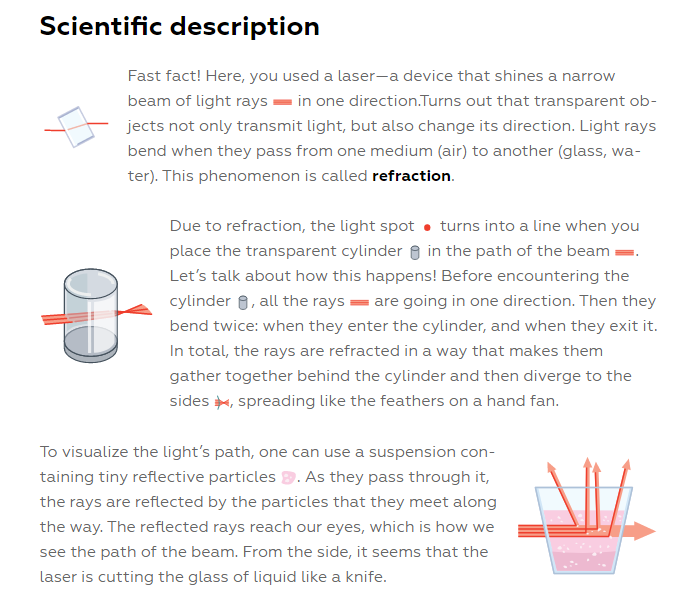
In terms of the experiments themselves, most are classics of the physics education world, broadly similar to experiments included in other science kits, such as solar energy demonstrations or water vortices.
They are designed, however, in a way that can produce dramatic results that can excite kids and can make Mel Physics kits something of a step up over most other physics boxes for kids in terms of engagement and entertainment.
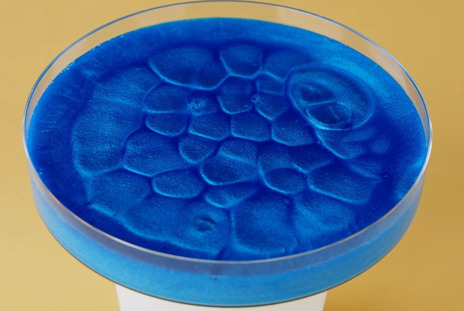
For example kids might build an infinity tunnel with mirrors and LEDS, create stunning convection cells, blow up a marshmallow to comical sizes using a vacuum pump or even get familiar with a Class 1 laser by building a stationary apparatus or using it to construct a kind of microscope.
As with the other Mel Science kits, the included physics experiments are designed to go with the downloadable Mel Science app, providing lessons, set up instructions, disposal information, topics for discussion, video demonstrations and more in a very convenient and centralized way.
In addition to the app, a subscription to Mel physics kit includes access to Mel Science’s VR lessons, and their first box includes a free pair of VR goggles specifically for this use.
There are a variety of physics topics that students can choose from, including electrostatics, temperature and gas laws.
Each topic contains several lessons that use the immersive VR experience to dive into interactive 3D representations of physics concepts, as well as pretty comprehensive and detailed audio-video explanations.
Overall, Mel Physics kits can be a great way to introduce kids to, and get excited about, the world of physics.
While the experiments may seem somewhat familiar at first to connoisseurs of STEM kits they can be far more exciting for kids to watch and use than many other physics kits out there.
The physics learning is also quite solid, with high tech VR lessons and professional and comprehensive, yet easy to understand, explanations that can complement and enrich just about any science curriculum for the age range.
Mel Chemistry
Mel Science’s chemistry kit subscription is Mel’s original science kit and is one of the company’s more comprehensive and expansive lines.
With this subscription kit, kids don’t just receive monthly chemistry experiments, but are actually sent quite a bit of high quality and fairly professional chemistry lab equipment that they can use at home in their studies, which is a welcome change from the typical disposable or plastic items sent out with other chemistry kits.
The first kit that students receive contains essential laboratory equipment, such as an Erlenmeyer flask, beakers, stoppers, funnels and more, as well as necessary safety equipment, a microscope attachment for smartphones and goggles for using the associated VR lessons.
Subsequent packages then include all the different compounds, chemicals and any specific equipment needed to set up and run the various chemistry experiments, usually with enough reagents to run them twice.
As with Mel Physics, each kit is themed around a particular topic and contains 2-3 experiments for kids to try each month.
Some examples of Mel Chemistry Kits include:
| Kit | Experiments | Physics Topics |
| Alchemy | Copper DendriteTransmutationCopper Mirror | Electron transferMolecular structuresConcentrationsMetals vs nonmetalsAnd more |
| But will it Burn | Igniting ironFire Foam | ReactivityGas mixtures and concentrationsFlammability OxidationAnd more |
| Egyptian Night | Egyptian NightSulfur Moon | Chemical clocksPrecipitationElectron transferMolecular bonding And more |
As can be seen the kits ultimately introduce fairly sophisticated and useful chemistry topics, providing students with a good, hands-on introduction into some fairly important chemistry fundamentals.
Much like the other Mel Science kits, the experiments themselves aren’t exactly groundbreaking.
Instead, we found them to be more of a twist on classic chemistry lab experiments, curated to yield attention-grabbing, sometimes quite spectacular results, that are likely to get kids excited about chemistry as they watch things ignite, grow, glow or otherwise change form.
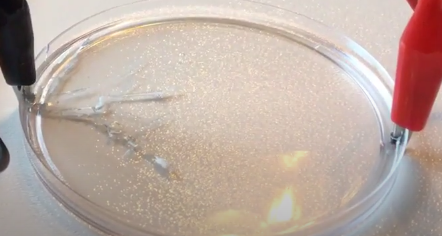
In terms of learning, these kits dive into the science behind the experiments pretty thoroughly, and tend not to shy away from the use of chemistry terms, chemical symbols or discussing interesting but more complex concepts in chemistry.
Although they can be a little complex for younger students, requiring some more parental help here and there, ultimately the explanations and discussions of chemistry are quite solid and can act as a pretty decent enrichment option.
In addition to the experiment kits, Mel Chemistry also integrates with the Mel app, which centralizes their instructions, provides useful explanations of the science, as well as discussion topics, disposal information, troubleshooting and more.
As with the Physics kits, subscriptions to Mel Chemistry includes access to an assortment of VR lessons. As the first kit in Mel’s line to include a virtual reality component, these lessons are quite comprehensive and include a variety of lessons and labs in atomic structures, the periodic table, molecules, isomerism and more.
Overall, parents with students who have a budding interest in chemistry will find a lot to like with Mel Chemistry kits, including both captivating experiments and high-quality learning.
For more information about Mel Chemistry, check out our in-depth review.
Mel Med
A new edition to the Mel Science lineup, Mel Med is aimed at a slightly different and older age group, namely kids ages 14+ who have expressed some kind of interest in medical science.
Mel Med is relatively unique as a kids science kit, rather than exploring a specific subject in the pure STEM fields (biology, chemistry, physics, etc), Mel Med allows kids to explore a variety of disciplines and careers in the medical world.
A subscription to Mel Med provides kids with up to 16 different kits, each of which contain several activities (up to five) and touch on a different discipline. For example, there are kits that cover surgery, dentistry, medical diagnostics, pharmacy and more.
Unlike the Physics and Chemistry boxes, or really more or less anything else on the market, rather than a DIY experiment set, each kit contains actual, functioning medical equipment, such as an electrocardiogram, mortar and pestle, an artificial jaw with teeth, dental tools, stethoscopes, uv lights and even artificial skin to practice their surgery.
In addition, the associated app provides students with patient videos, instructions and explanations to help them learn, test their knowledge, keep track of their work, create reports and even diagnose virtual patients.
The overall idea of these kits is to provide interested students with an opportunity to try their hand and get some hands-on experience with certain medical procedures and processes.
Obviously, with real working medical equipment (such as scalpels, dental drills and more) parents will have to keep a closer eye on their kids when using these kits to prevent any accidents or damage from occurring.
That said, although less focused on helping students in their K-12 science education, these kits can deliver a unique, highly interesting and fun practical experience that can, in turn, give kids a clearer idea of what a career in medicine involves.
How easy is it to teach Mel Science at home?
As a whole, Mel Science kits make it quite easy to teach kids, whether as part of a homeschool curriculum or as enrichment to traditional schooling.
Each kit is mostly complete and more or less open and go, providing both parents and students with the parts they need, as well as detailed information on how to set things up, how to run the experiments and even how to dispose of things.
There are even helpful videos demonstrating how each project is intended to function.
As a result, there is very little in the way of prep work required when using these kits.
In terms of learning, the kits do a great job at providing a fairly comprehensive examination of the relevant science topics given the age ranges, and can do a pretty good job at guiding kids through the material clearly and succinctly.
Overall, we feel that even parents who are a little rusty when it comes to science should be able to use these kits with little trouble.
Pros and Cons of Mel Science Kits
Pros
Usually get more than one project per box
Mel Science kits tend to come with several projects or activities for kids to try, which can extend the learning and the value that students will get out of each kit over a period of a month.
High tech and very cool VR and augmented reality lessons
In addition to pretty interesting and fun experiments, Mel Science has integrated fairly cutting edge technology into its teaching.
With kits offering virtual reality or mixed-reality educational experiences, they end up being far more engaging and immersive for kids, which in turn tends to create a deeper and more meaningful learning experience.
Instructions are clear and quite easy to follow
As they provide very clear and detailed instructions on how to set up and conduct experiments, Mel Science kits are essentially open and go science kits that require very little in the way of prep or deep knowledge on the part of parents.
Includes pretty everything a student needs in one box
Unlike some other science kits, Mel Science includes essentially all the components to build and conduct their experiments, with the exception of batteries and other small commonly found items.
This means that parents won’t usually have to run out and buy supplies, which is always annoying, or worry about using their own glassware as part of a science experiment.
Learning material is surprisingly high quality, in-depth
While most science kits out there tend to focus more on creating a fun and exciting experience for kids, and tend to skimp a bit on the quality and depth of the science learning they include, Mel Science does a good job at providing both.
The lessons in each project and in each subject don’t shy away from technical terminology or in-depth explorations of complex concepts and, combined with the kits’ fun hands-on activities, can be an excellent supplement or even enrichment tool for just about any science curriculum.
App is fairly smooth and has a lot of features
The Mel Science apps tend to be well made. in our experience, the Mel Science apps are well designed, smooth and fairly intuitive to use on a mobile device.
More than that, the apps help centralize a lot of the various components of a Mel Science subscription, including acting as an access point for lessons, assembly instructions, progress tracking and more.
Very hands on and exciting science experiments
While they are broadly similar to classic science experiments, the activities and projects found in Mel Science kits are highly curated and are picked to produce interesting and often dramatic results, with things igniting, racing away, launching into the air, changing color and more.
As a result, they are highly effective at keeping a child’s attention and in delighting them, which in turn can lead them to becoming more excited about and interested in pursuing their STEM studies.
Cons
Parental supervision is usually required
While these kits are aimed at kids, they do involve some fairly professional equipment (glass objects, chemicals, lasers, various tools and more) that can potentially be dangerous in the hands of an unsupervised child.
Similarly, while it is a good thing Mel offers fairly in-depth explorations of science concepts in their lesson, they can be at a higher level than many kids (especially the younger ones) can make sense of on their own.
As a result, parents will probably need to spend time overseeing projects and occasionally stepping in to clarify or help explain certain concepts.
Isn’t all that cheap compared to some other kits
Although not the most expensive learning kit out there, Mel Science kits are also not the cheapest. At over $30 per kit, their price can add up over time.
Learning can involve a fair bit of screen time
Getting the most out of Mel Science kits often requires a good amount of screen time, as a large part of the overall experience involves the use of its related apps, including virtual reality or augmented reality lessons and activities.
While these features can be very cool and useful, they tend to require more screen time than the average science kit out there, which can be an issue for some families.
Who are Mel Science kits ideal for?
Parents wanting to get kids interested in STEM
Mel Science’s kits tend to be easy to use and produce fun and even spectacular results.
With things igniting, inflating, launching, exploding and changing shape before their very eyes, these hands-on science projects can be very effective at grabbing kids’ attention and sparking an interest in the sciences.
Homeschooling families looking to add hands-on science to a curriculum
Not every child learns best through textbook or even video learning. Some students are more tactile and learn best when they can touch, feel and otherwise personally experience what they are learning.
Combining comprehensive science learning with fun, stimulating and easy to use experiments, Mel Science can be a great hands-on addition to most science curricula out there.
Students who have a particular interest in a subject (Medicine, Chemistry or Physics)
Mel Science can be a great gift to a student who has an interest in a particular branch of science, such as chemistry, physics or medicine, as in addition to general STEM kits, they offer high-quality and focused subscriptions, where kids can dive deeper into a particular science subject.
Who are they not ideal for?
Those looking for a full and comprehensive STEM curriculum
While the lessons that Mel Science includes in each of its kits are fairly high quality and in-depth in the topics they involve, these kits and their associated apps do not represent a complete STEM curriculum and should be used as a supplement or enrichment tool.
Those wanting to encourage self-study and independent exploration
Some parents prefer to allow their kids to explore science and learning kits on their own, thereby encouraging independent learning.
Mel Science kits, however, do tend to require parental supervision due to the components of the kits (and sometimes the nature of the experiments), as well as the complexity of some of the science concepts that they introduce to kids and the sophistication of the lessons.
Those looking for fast and inexpensive STEM kits
Each Mel Science kit tends to include several projects, topics of discussion and associated VR or AR lessons that are designed for kids to explore over a period of a month.
They also include a variety of real-life tools, components and digital features that can make them a little more expensive than other kits.
As a result they may not be the best idea for parents who are looking for a fast and cheap last minute science gift.
Mel Science Pricing
Note: Prices correct as of writing, all prices in USD.
Mel Science has a fairly simple and straightforward price plan.
Despite offering several kits covering several subjects, and aimed at slightly different age ranges, subscriptions and kits are priced the same (at time of writing).
These kits are offered at month to month, 9 month and 12 month subscription options. It is a little odd that there is no 3 month option, however there is a fairly significant price break for longer subscriptions, which is nice.
The only exception to this is the medical science kits, which contain projects and equipment that are a little more sophisticated and are subsequently higher priced.
It is important to note that with the Chemistry and Physics sets Mel Science does send a starter pack with VR goggles and access to their VR lessons free of charge.
Mel Science Kids
| Month to month | 9 Months | 12 Months |
| $34.90 per month | $31.10 per month | $26.20 per month |
Mel Science Physics
| Month to month | 9 Months | 12 Months |
| $34.90 per month | $31.10 per month | $26.20 per month |
Mel Science Chemistry
| Month to month | 9 Months | 12 Months |
| $34.90 per month | $31.10 per month | $26.20 per month |
Mel Science Med
Mel Science Med Kit – $69.90 per month
All told, Mel Science kits tend to be a little more expensive than some competing subscription STEM kits out there.
That said, they do offer families more physical goods both per box and in total than many other competing products, more in-depth learning, and access to a dedicated app and pretty high-tech virtual/mixed reality features.
Is Mel Science worth the money?
While Mel Science kits aren’t the cheapest science kits for kids out there, we do think that they provide a great deal of value for the money.
The projects and experiments provided in each kit are classics of science and are fun, exciting and introduce a variety of important scientific concepts.
In terms of learning, the included lessons go above and beyond what is included in most kits, approaching topics with a degree of comprehensiveness and sophistication that is lacking in many other STEM products aimed at kids.
As a whole, Mel Science does not seem to shy away from using professional terms and symbols where possible, nor does the company shy away from touching on fairly complex ideas in science.
While the learning may, at times, be a little complex for the youngest students in the age range and require parental help, we appreciate the company does not seem to dumb down the material or talk down to their audience in any way(even when lessons are in comic book form).
Overall, although the company does not yet cover all STEM subjects (noticeably absent are kits and projects for life science and technology), for the subjects and topics they do cover we feel that Mel Science’s STEM kits can be excellent hands-on resources and enrichment tools that are well worth the time and money.
Bottom Line
With fun, hands-on experiments, detailed instructional material and a variety of cool high-tech features, Mel Science offers science kits for kids that balance interactivity and education in a way that few others can.
Although not always the cheapest option, and while parental supervision is often required, those looking for a monthly science kit that can spark their child’s imagination and interest in science should definitely take a look at the kits that Mel Science has to offer.

About the Author
David Belenky is a freelance writer, former science and math tutor and a tech enthusiast. When he’s not writing about educational tech, he likes to chill out with his family and dog at home.
